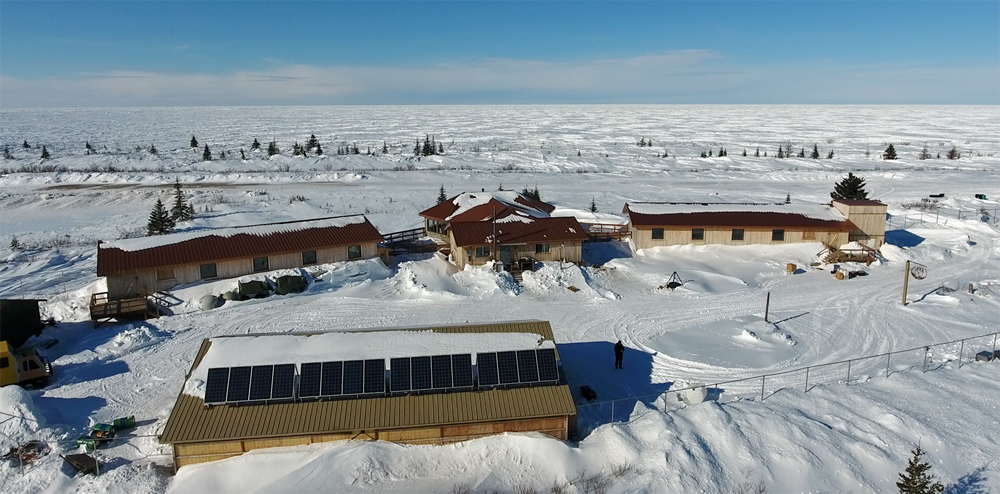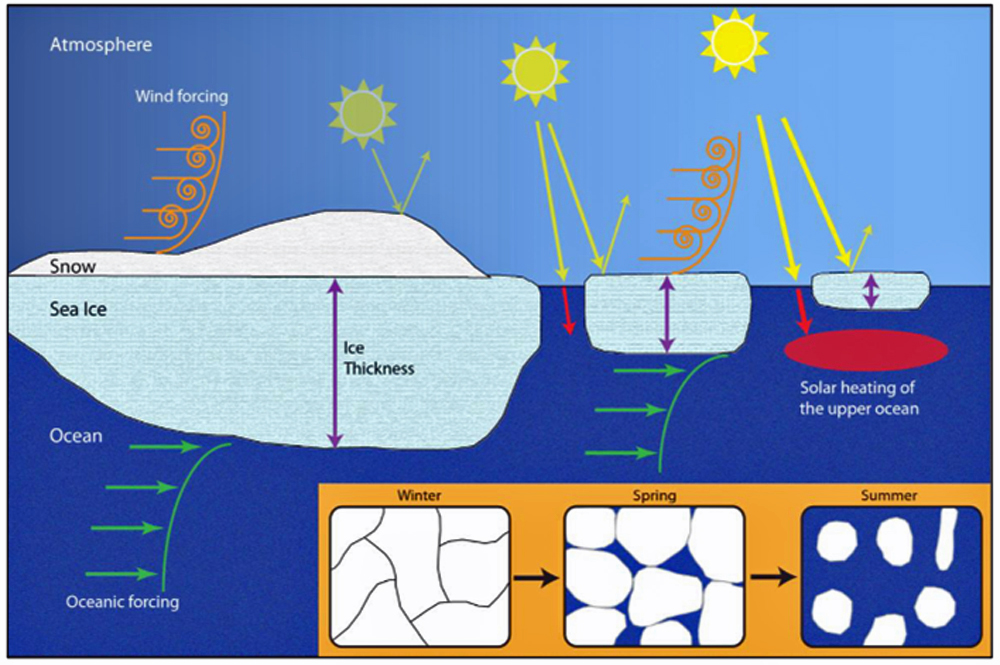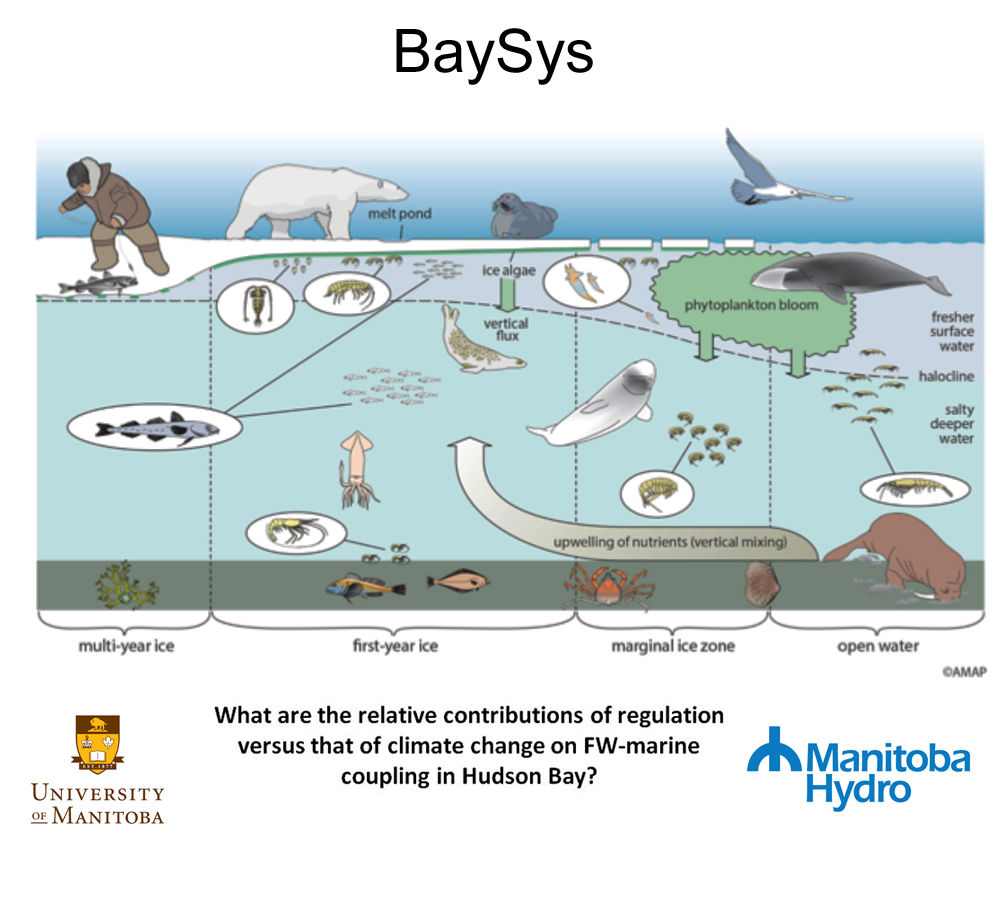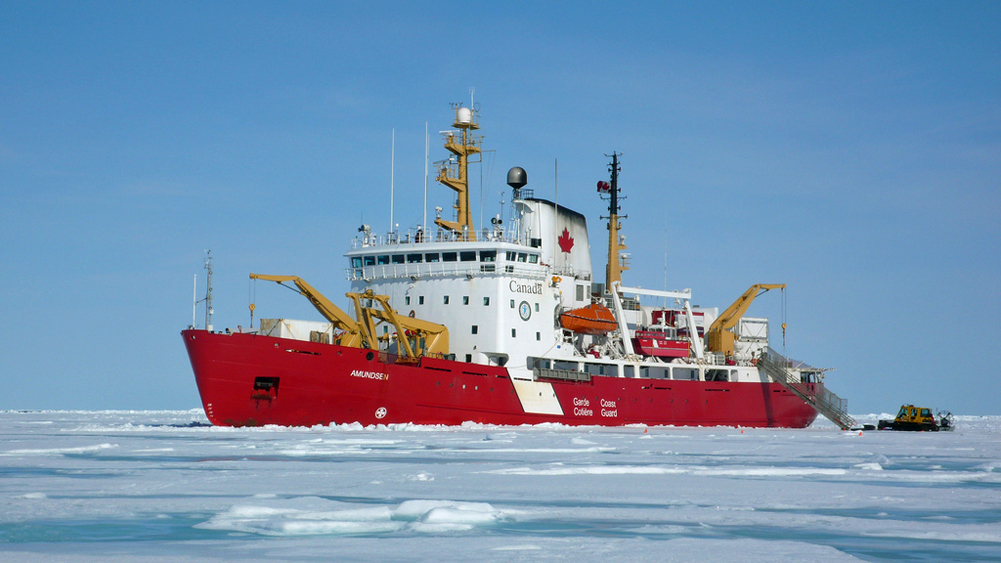
Nanuk Polar Bear Lodge was the host for the second phase of research on the Hudson Bay System Study (BaySys).
Churchill Wild was proud to host scientific researchers from the University of Manitoba and across Canada at Nanuk Polar Bear Lodge this winter and spring for a major scientific research project that will inform science, industry, and policy in Canada for both Arctic and sub-Arctic issues.
The Hudson Bay System Study (BaySys) project is examining the influence of freshwater on Hudson Bay marine and coastal systems and will provide a scientific basis to separate climate change effects from those of regulation of freshwater on physical, biological and biogeochemical processes in Hudson Bay.
Churchill Wild is proud and excited to be doing our part for this project! Dr. David Barber, the lead researcher on the project, provided us with a summary of the research activities on the project, which follows below.
The Hudson Bay System Study (BaySys)
The BaySys project is a $17 million collaboration (2015-2019) between the University of Manitoba, Manitoba Hydro, ArcticNet, Hydro Quebec, Ouranos, and the partnering Universities of Laval, Québec à Rimouski, Calgary, Northern British Columbia and Trent.
Field programs began in the fall of 2016 and will continue through to the summer of 2017. Analysis and reporting on the project will be completed by September of 2019.
Introduction

The control which sea ice has on the exchange of light, heat and momentum in the marine system.
The past century has seen significant hydroelectric development on rivers flowing into Hudson Bay, with more than 21,000 mW of annual production on the Nelson and La Grande river systems.
Freshwater entering Hudson Bay is susceptible to modification, both in terms of water quality and quantity, through exchange processes in the watershed, and through climate forcing of the hydrological cycle both in space and time.
A unique aspect of this system is the role that freshwater plays on both sea ice thermodynamic and dynamic processes within Hudson Bay. This freshwater-marine coupling affects all aspects of the Hudson Bay physical, biological and biogeochemical systems through the control which sea ice has on the exchange of light, heat and momentum in the marine system.
The Hudson Bay System Study (BaySys) is a Natural Sciences and Engineering Research Council (NSERC) Collaborative Research and Development (CRD) project designed to examine the influence of freshwater on Hudson Bay marine and coastal systems.
Specifically, we will provide a scientific basis to separate climate change effects from those of regulation of freshwater on physical, biological and biogeochemical processes in Hudson Bay.

Interactions between the climate, marine and freshwater systems of Hudson Bay.
The project will address this objective from a “systems” perspective, with sub-objectives to examine the climate, marine, and freshwater systems, and to study the cycling of carbon and contaminants as per the figure above.
To address the overarching goal of providing a scientific basis to separate climate change and regulation impacts on the Hudson Bay system, we propose a four-year (2016-2019) comprehensive study that will integrate field-based experimentation with coupled climatic-hydrological-oceanographic-biogeochemical modeling.
The study will be carried out by researchers from six academic institutions in close cooperation with Manitoba Hydro and its subcontractors. Research teams are organized to investigate the following five inter-connected subsystems. A University of Manitoba faculty member and Manitoba Hydro staff member co-lead each team as follows:
- Marine/Climate System – J. Ehn; S. Toews
- Freshwater/Littoral System – T. Stadnyk; K. Koenig
- Marine Ecosystem – J.E. Tremblay; G. Swanson
- Carbon Cycling – T. Papakyriakou; B. Gill
- Contaminants – F. Wang; A. Zacharias
Our central hypothesis is that factors that can be primarily attributed to climate change, such as a long-term change in temperature, atmospheric circulation, sea ice, and supply of freshwater, will have a different impact on Hudson Bay than factors that can be primarily attributed to regulation, such as seasonal shifts in the hydrograph.
This multidisciplinary research approach will include retrospective analysis, fieldwork, and modeling efforts. Bay-wide field studies will be carried out from Churchill (winter, 2017); from Churchill Wild’s Nanuk Polar Bear Lodge (winter 2017); on board the CCGS Amundsen (spring 2017) and the DesGrossiers (fall 2016) icebreakers.
These field projects will provide data over large spatial scales during the spring melt season. These efforts will complement existing data from the summer and fall periods, collected during past cruises to provide a detailed picture of the annual cycle of how freshwater interacts with the marine waters of Hudson Bay. Combined, these field efforts will provide the first comprehensive physical, biological and biogeochemical status of Hudson Bay.
Watershed models and coupled physical-biogeochemical models of the marine environment will be informed by the field observations, and used to project conditions for the 2030s and 2050s. The models will be forced with scenarios of climate change and regulation, allowing for the separation of those two impacts on the Hudson Bay system.
Field team currently conducting various studies
The Churchill component was conducted from the Churchill Northern Studies Centre (CNSC) in Churchill, Manitoba, and resulted in new data on sea ice motion (first figure below) in winter; new observations of water quality and quantity parameters; and offshore marine measurements in mid-winter (January/February, 2017).
The second component of the studies recently took place at Churchill Wild’s Nanuk Polar Bear Lodge. The support here was excellent, with detailed studies being conducted immediately north of the lodge on sea ice, as far west as the Nelson and Hayes Rivers and as far east as Cape Tatnum via overnight snowmobile expeditions.
A comprehensive spring program will be conducted between May 31 and July 13 onboard the Canadian Research Icebreaker (CCGS Amundsen), with a series of transects being completed bay-wide (third figure below) with community visits to Chesterfield Inlet and Churchill. Forty scientists and 40 crew members will conduct the first ever comprehensive bay-wide survey of freshwater-marine coupling at the peak of the spring runoff and while the ice cover is still intact on Hudson Bay via this survey.
Conclusions
We anticipate that the results from BaySys will inform science, industry, and policy in Canada for both Arctic and sub-Arctic issues. For the scientific community, the project will expand knowledge of climate impacts on the Arctic system, in a region where there are substantial gaps and limitations in existing knowledge.
For Manitoba Hydro the project fills a regulatory need to understand its influence on Hudson Bay, and to collect baseline data prior to building additional generating capacity on the Nelson River.
For other industries, such as shipping and tourism, an improved understanding of the future of sea ice conditions in Hudson Bay, and associated physical, biological and geochemical changes, will help with strategic decision-making in and around Hudson Bay.









